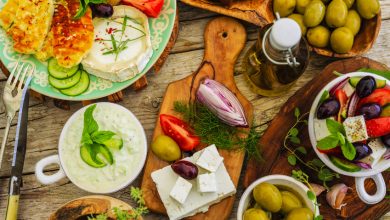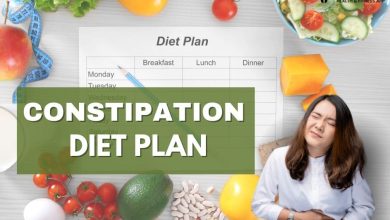Mediterranean Diet Meal Plan: What I Ate for 7 Days (and the Results)

The Mediterranean diet has long been praised as one of the healthiest ways to eat. Inspired by the traditional eating habits of countries bordering the Mediterranean Sea, this diet emphasizes whole foods, healthy fats, lean proteins, fruits, vegetables, nuts, and grains. Unlike many restrictive diets, it doesn’t cut out entire food groups or require calorie counting. Instead, it encourages balance, freshness, and mindful eating.
To put it to the test, I decided to follow a Mediterranean Diet Meal Plan for seven days straight and track my meals, energy levels, and overall results. What follows is a detailed look into what I ate, how I felt, and the key takeaways you can use if you’re considering adopting this lifestyle.
What Is the Mediterranean Diet?
Before diving into the meal plan, let’s break down what the Mediterranean diet actually is. At its core, it focuses on:
- Fruits and vegetables: Fresh, seasonal produce is a stapl
- Whole grains: Brown rice, quinoa, oats, whole wheat pasta, and bread.
- Healthy fats: Olive oil, nuts, seeds, and avocados.
- Lean protein: Fish, poultry, legumes, and occasionally red meat.
- Dairy in moderation: Yogurt and cheese are included but not over-consumed.
- Red wine in moderation: Often enjoyed with meals.
- Herbs and spices: Used generously instead of salt for flavor.
This approach is less about restriction and more about nutrient-dense balance. It’s been linked to improve your heart health, improved brain function, weight management, and reduced risk of chronic diseases.
My 7-Day Mediterranean Diet Meal Plan
Here’s exactly what I ate for a week following this lifestyle.
Day 1
Breakfast:
- Greek yogurt topped with fresh berries, a drizzle of honey, and crushed walnuts.
- Green tea.
Lunch:
- Chickpea and vegetable salad with cucumbers, cherry tomatoes, parsley, lemon juice, and olive oil.
- Whole wheat pita on the side.
Snack:
- A handful of almonds and an apple.
Dinner:
- Grilled salmon with roasted zucchini, bell peppers, and eggplant.
- Quinoa drizzled with olive oil and fresh herbs.
How I Felt: Energized and satisfied. The meals were filling but light.
Day 2
Breakfast:
- Avocado toast on whole wheat bread topped with cherry tomatoes and feta cheese.
- Black coffee.
Lunch:
- Lentil soup with carrots, onions, celery, and spinach.
- A small side salad with olive oil and balsamic vinegar.
Snack:
- Carrot sticks with hummus.
Dinner:
- Baked chicken breast with rosemary and lemon.
- Steamed broccoli and brown rice.
How I Felt: Clear-headed and productive. No afternoon crash.
Day 3
Breakfast:
- Oatmeal topped with figs, almonds, and a sprinkle of cinnamon.
- Green tea.
Lunch:
- Tuna salad with arugula, olives, red onion, cucumber, and olive oil dressing.
- A slice of whole grain bread.
Snack:
- Greek yogurt with sunflower seeds.
Dinner:
- Grilled shrimp with garlic, olive oil, and lemon.
- Couscous with chopped parsley and tomatoes.
How I Felt: Light but full. Energy levels were steady all day.
Day 4
Breakfast:
- Smoothie with spinach, banana, almond milk, and chia seeds.
- A slice of whole grain toast with olive oil.
Lunch:
- Falafel wrap with whole wheat pita, lettuce, tomato, and tahini sauce.
Snack:
- A handful of pistachios.
Dinner:
- Grilled mackerel with roasted sweet potatoes and asparagus.
How I Felt: Slept well the previous night and woke up refreshed.
Day 5
Breakfast:
- Greek yogurt parfait with oats, pomegranate seeds, and pumpkin seeds.
Lunch:
- Quinoa and chickpea tabbouleh with cucumbers, parsley, lemon, and olive oil.
Snack:
- Fresh orange slices and a few almonds.
Dinner:
- Baked cod with roasted vegetables (eggplant, zucchini, bell pepper).
- A small glass of red wine.
How I Felt: Very satisfied—this was one of the tastiest days so far.
Day 6
Breakfast:
- Whole wheat toast with almond butter and banana slices.
- Black coffee.
Lunch:
- Grilled chicken and vegetable kabobs with olive oil marinade.
- Brown rice pilaf.
Snack:
- A handful of walnuts and dried apricots.
Dinner:
- Sardines with a tomato-cucumber salad and whole grain bread.
How I Felt: Surprisingly full despite lighter portions.
Day 7
Breakfast:
- Omelet with spinach, mushrooms, and a sprinkle of feta.
- A slice of whole wheat bread with olive oil.
Lunch:
- Mediterranean grain bowl with farro, roasted chickpeas, kale, olives, cucumbers, and tahini drizzle.
Snack:
- Apple slices with tahini dip.
Dinner:
- Grilled sea bass with roasted cauliflower and a drizzle of lemon.
- A small glass of red wine.
How I Felt: Strong and balanced, with noticeably better digestion.
The Results After 7 Days
After one week on this Mediterranean Diet Meal Plan, here’s what I noticed:
- Higher Energy Levels
I didn’t feel sluggish after meals, and my energy stayed consistent throughout the day. - Better Digestion
The fiber-rich meals left me feeling light and regular—no bloating or heaviness. - Weight Loss
Though this wasn’t my primary goal, I lost about 2 pounds in one week without counting calories or restricting portions. - Improved Sleep
I slept more deeply and woke up refreshed. - No Cravings for Junk Food
Because meals were flavorful and satisfying, I didn’t crave chips, sweets, or fast food.
Benefits of the Mediterranean Diet
Research consistently supports the Mediterranean diet as one of the healthiest eating patterns in the world. Key benefits include:
- Heart health: Rich in omega-3s and healthy fats that can lower your cholesterol.
- Weight management: Helps regulate appetite and avoid overeating.
- Brain health: Linked to improved memory and lower risk of Alzheimer’s.
- Anti-inflammatory effects: Thanks to antioxidant-rich fruits and vegetables.
- Longevity: Populations in Mediterranean regions often live longer, healthier lives.
Tips for Following a Mediterranean Diet Meal Plan
If you want to try this diet yourself, here are some practical tips:
- Cook with olive oil instead of butter.
- Choose whole grains over refined carbs.
- Eat seafood at least twice a week.
- Snack on nuts, seeds, and fruits instead of processed foods.
- Use herbs and spices for flavor instead of excess salt.
- Enjoy meals with family and friends—mindful eating matters.
- Add color to your plate. The more colorful, the more nutrients you’re likely getting.
Final Thoughts
Following a Mediterranean Diet Meal Plan for seven days was eye-opening. Not only did I feel more energetic and less bloated, but I also enjoyed every meal without ever feeling deprived. Unlike fad diets, the Mediterranean diet is sustainable, delicious, and deeply rooted in culture and tradition.
If you’re looking for a way to eat healthier, lose weight naturally, and improve your overall well-being, this could be the perfect plan for you. Whether you stick with it for a week, a month, or make it your permanent lifestyle, the Mediterranean diet proves that healthy eating doesn’t have to be complicated—or boring.




